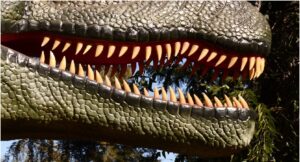Parents have a lot on their plate, especially when raising a child. One challenge that can occur is when your child has head lice. Head lice are common for children, especially if they have playmates.
Head lice are small parasites that linger on the scalp and hair. They feed on blood from the scalp and reproduce by laying eggs, known as nits, on the hair shaft. Lice can spread through direct head-to-head contact, sharing personal items like combs and hats, or even the use of furniture, such as pillows and upholstered chairs.
Recognizing the Symptoms
Knowing the signs and symptoms of head lice infestation is essential for early detection and prompt treatment. Some common symptoms include:
- Intense itching on the scalp
- Tickling sensation or feeling of something in the hair
- Sores or red bumps on the scalp or neck
- Irritability or difficulty sleeping
- Lice eggs or nits present on the hair shafts
Treatment Options
Treatment options come in two parts– eliminating head lice and preventive maintenance. Once you’ve confirmed that your child has head lice, you can start treating and eradicating them.
The earlier you detect your child’s head lice, the better and easier the treatment options are.
Over-the-Counter Treatments
Over-the-counter (OTC) treatments are widely available for head lice. These head lice removal products usually contain ingredients like pyrethrins, dimethicone, or permethrin, which effectively kill lice.
When using this kind of product, it’s important to carefully follow the instructions provided with the product and repeat the treatment as necessary.
Combing and Nit Removal
Combing is a vital part of the treatment process. Use a fine-toothed comb designed for lice removal and comb through your child’s hair section by section.
While combing is an effective way to eliminate lice, manual nit removal can also greatly help. Repeat the process every few days to ensure all lice are removed.
Prevention Measures
The other half of treating head lice outbreaks is the prevention of another outbreak. Listed below are some preventive measures you can take to avoid head lice infestation.
Cleaning and Disinfecting
Generally, head lice don’t survive long when they are not on the scalp. However, to prevent re-infestation, it’s important to clear and disinfect items that may have come into contact with lice. Wash bedding, towels, hats, and clothing in hot water and dry them on high heat. Combs, brushes, and hair accessories should be soaked in hot water or disinfected using lice-killing products.
Treating Household Items
Vacuuming the house thoroughly and frequently can help remove any stray lice or nits that may have fallen off the scalp. Stuffed animals, pillows, and upholstered furniture can also be placed in sealed plastic bags for a couple of weeks to suffocate any lice or nits present.
Dealing with Recurring Infestations
In some cases, head lice infestations can recur despite initial treatment. If this happens, it’s important to identify the source of re-infestation. Check other family members and close contacts for lice and treat them simultaneously to prevent a cycle of infestation.
When to Seek Professional Help
If you find it challenging to eradicate head lice or if the infestation persists despite treatment, it’s advisable to seek professional help. Healthcare providers and specialized lice treatment centers can provide expert guidance and recommend the most effective options.
Addressing Stigma and Embarrassment
Having head lice can be embarrassing for children, leading to feelings of stigma and self-consciousness. As a parent, providing emotional support and reassuring your child that having lice does not reflect personal hygiene or cleanliness is crucial. Emphasize that it’s a common issue that can happen to anyone and can be treated effectively.
From Nits to Bliss
No significant health issues can be caused by head lice for your child. If your child has head lice, treat them right away in a safe manner to stop the lice from spreading. Head lice treatment products should only be used if they are safe.
Dealing with head lice can be frustrating. But, with the right knowledge and proactive measures, you can eliminate and prevent head lice from your child.
https://caringforkids.cps.ca/handouts/health-conditions-and-treatments/head_lice






